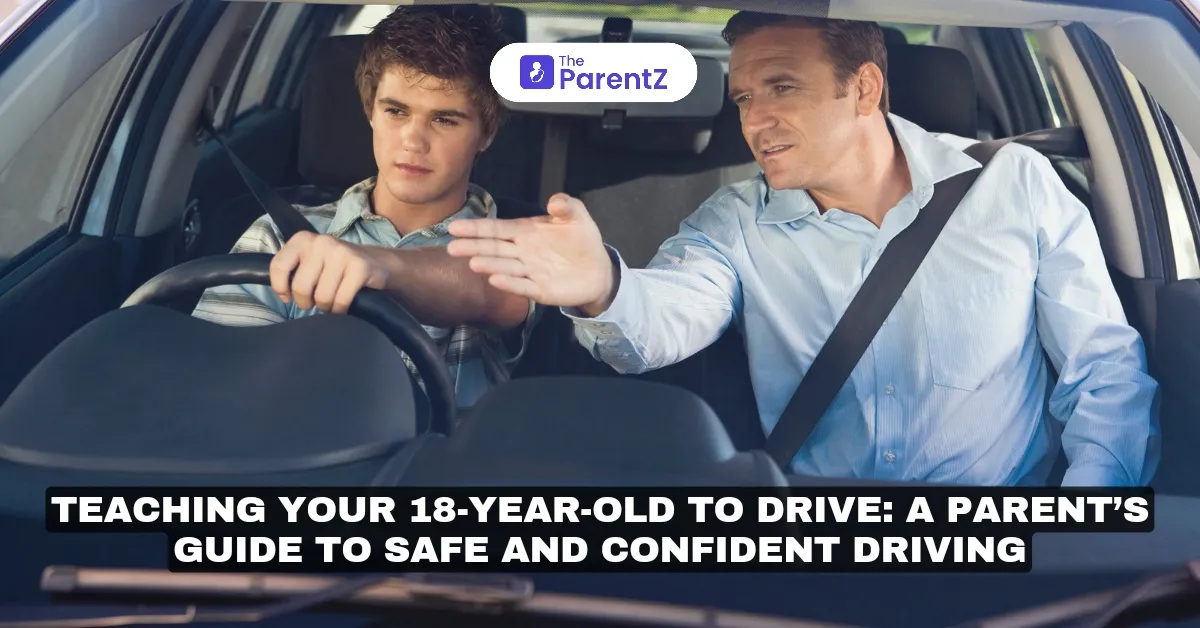Teaching your 18-year-old to drive is a major milestone in their journey to independence and adulthood. While some teens may start driving lessons earlier, 18 is still a critical age to learn the skills necessary for safe driving. As a parent, guiding your teen through this process can feel overwhelming, but with the right approach, you can help them become confident and responsible drivers. This article will explore key strategies for giving driving lessons to your 18-year-old, including building foundational skills, promoting safety, fostering confidence, and staying patient throughout the process.
Start with the Basics: Understanding the Rules of the Road
Before getting behind the wheel, it’s essential that your 18-year-old has a solid understanding of the rules of the road. Start by reviewing the driving handbook for your state or country, which outlines the essential laws and regulations that every driver must follow. This includes:
- Traffic signs and signals: Teach your teen to recognize and understand the meaning of various traffic signs, lights, and road markings.
- Right of way rules: Explain situations where drivers must yield the right of way, such as at intersections, crosswalks, and when merging onto highways.
- Speed limits: Emphasize the importance of obeying speed limits, not only for legal reasons but also to ensure the safety of everyone on the road.
- Parking regulations: Ensure your teen knows how to properly park in different scenarios, including parallel parking, parking on hills, and in restricted areas.
Encourage your 18-year-old to study these rules and take any required written exams before their first driving lesson. Understanding the legal and practical aspects of driving will give them the confidence to approach their lessons with a stronger foundation.
Start in a Safe Environment: The Power of Parking Lots
When it's time to get behind the wheel for the first time, choose a safe and quiet environment for practice. Empty parking lots are ideal because they provide wide-open spaces free from the stress of traffic, allowing your teen to focus on basic vehicle control without the added pressure of navigating busy streets.
What to practice in a parking lot:
- Basic car controls: Show them how to adjust mirrors, use the turn signals, manage the windshield wipers, and familiarize them with the dashboard controls.
- Starting and stopping smoothly: Teach them how to gradually accelerate and brake, which helps them develop smoother driving habits.
- Turning and steering control: Practice making wide and sharp turns to get them comfortable with steering.
- Parking: Introduce parallel parking, backing into spaces, and parking between lines in a safe, low-pressure setting.
Starting in a parking lot can help ease your teen’s nerves and give them time to focus on basic maneuvers before moving into more complex driving scenarios.
Transition to Quiet Neighborhood Streets
Once your 18-year-old has gained confidence with the basics, it’s time to move onto quiet residential streets. Here, they can begin to practice driving in real traffic conditions, but without the added stress of high-speed roads or heavy congestion.
What to focus on in residential areas:
- Scanning for pedestrians and cyclists: Teach your teen to always be aware of their surroundings, especially in neighborhoods where children, pets, and cyclists may unexpectedly appear.
- Navigating stop signs and yield signs: Practice making complete stops at stop signs and correctly yielding to other drivers or pedestrians when necessary.
- Handling parked cars: Show them how to maneuver around parked cars on narrow streets while maintaining a safe distance.
- Safe turns: Practice turning at intersections, using turn signals correctly, and judging when it’s safe to make left or right turns.
This step allows your teen to practice decision-making in real traffic situations but at slower speeds, reducing the risk of accidents and building their confidence.
Gradually Introduce More Complex Driving Scenarios
As your 18-year-old becomes more comfortable behind the wheel and demonstrates competence in basic driving situations, it's time to introduce more complex scenarios. This stage is essential for building well-rounded driving skills and preparing your teen for a variety of real-world driving conditions.
What to focus on in more challenging situations:
- Driving on Busy Streets: Once they’ve mastered residential streets, start practicing on roads with more traffic. Teach them how to safely navigate traffic lights, deal with heavier traffic flows, and practice lane changes. Emphasize the importance of staying calm and alert in busier environments.
- Highway Driving: Highway driving introduces higher speeds and new challenges, such as merging, exiting, and maintaining safe distances from other vehicles. When teaching highway driving, emphasize:
- Merging: Teach your teen how to accelerate to match the speed of highway traffic and how to safely merge without disrupting the flow of vehicles.
- Maintaining Safe Following Distances: Encourage the "three-second rule" to ensure they are not tailgating, which allows for enough time to stop in case of sudden braking.
- Handling Lane Changes: Reinforce the importance of checking mirrors and blind spots before changing lanes, signaling properly, and only making the maneuver when it’s safe.
- Night Driving: Night driving presents unique challenges due to reduced visibility and glare from other vehicles' headlights. Gradually introduce night driving once your teen is comfortable driving during the day. Make sure they practice:
- Using Headlights Properly: Teach them when to switch between high and low beams to maximize visibility while ensuring they don’t blind oncoming drivers.
- Scanning the Road for Hazards: Reinforce the need to be even more alert for pedestrians, cyclists, and animals at night, as they can be harder to spot.
- Handling Glare: Show them how to adjust mirrors and focus their sight away from the direct glare of oncoming headlights.
- Driving in Different Weather Conditions: Weather conditions can drastically affect road safety. If possible, practice driving in the rain, snow, or fog to teach your teen how to adjust their driving accordingly. Focus on:
- Slower Speeds and Longer Stopping Distances: Emphasize that wet or icy roads require slower speeds and longer distances to stop safely.
- Using Windshield Wipers and Defrosters: Ensure they know how to operate these controls properly, especially in rain or foggy conditions.
- Skid Control: If possible, demonstrate how to react in the event of a skid, teaching them to steer gently into the skid rather than panicking.
Encourage Defensive Driving Habits
A key part of safe driving is developing a defensive driving mindset, which involves being aware of other drivers' behavior and anticipating potential hazards. Defensive driving can significantly reduce the risk of accidents and help your teen become a safer, more confident driver.
Defensive driving strategies to teach:
- Anticipate the Actions of Other Drivers: Encourage your teen to always be aware of their surroundings and predict what other drivers might do, whether it’s a sudden stop, an unexpected lane change, or failing to yield.
- Maintain a Safe Following Distance: Remind them that tailgating increases the risk of rear-end collisions. Keeping a safe following distance gives them more time to react to sudden stops or changes in traffic flow.
- Avoid Distractions: Teach your teen to minimize distractions, such as using their phone or adjusting the radio while driving. Reinforce the importance of keeping their full attention on the road.
- Follow the Speed Limit: Emphasize that speed limits exist for a reason. Driving at a safe speed ensures they have more control over their vehicle and better reaction times.
By teaching defensive driving habits, you’re helping your 18-year-old anticipate potential dangers and stay safe on the road.
Foster Confidence, Not Overconfidence
Confidence behind the wheel is important, but overconfidence can lead to risky driving behavior. While it's great that your teen feels comfortable driving, remind them that even experienced drivers must follow the rules of the road and drive cautiously.
How to encourage the right balance of confidence:
- Positive Reinforcement: Offer praise when your teen demonstrates safe and responsible driving. Positive feedback builds their confidence without encouraging reckless behavior.
- Frequent Reminders: Reinforce the importance of staying alert and cautious, no matter how comfortable they feel behind the wheel.
- Setting Limits: Encourage your teen to recognize their limits and avoid risky behaviors, such as driving when they’re tired or in unfamiliar conditions without prior experience.
Balancing confidence with caution will make your 18-year-old a more responsible driver and help them avoid dangerous situations.
When They’re Ready, Schedule a Professional Driving Test
Once you feel your 18-year-old has gained enough experience and confidence behind the wheel, it’s time to schedule a professional driving test. Many places require both a written and practical driving exam, so make sure they’re prepared for both.
Final tips for exam day:
- Review the Rules of the Road: Before the test, go over key rules and laws to ensure they’re fresh in your teen’s mind.
- Stay Calm: Remind your teen to stay calm and focus on the road, just as they’ve done during their practice sessions.
- Test Day Practice: On the day of the test, give them time to practice driving around the testing area to familiarize them with the routes and conditions.
Once they pass, celebrate their achievement! Getting a driver’s license is a huge step toward independence, and you’ve helped them get there.
Conclusion
Teaching your 18-year-old to drive is a significant milestone that comes with both excitement and responsibility. By fostering a supportive and structured learning environment, you can help your teen develop the skills and confidence necessary to navigate the roads safely. Remember, patience and open communication are key; encourage your young driver to ask questions and express concerns. Regular practice, coupled with discussions about the rules of the road and the importance of safe driving habits, will lay a strong foundation for their driving journey. As a parent, your guidance can instill a sense of responsibility that will serve them well throughout their lives. Ultimately, the goal is not only to help them pass their driving test but also to ensure they become safe, responsible drivers who respect themselves, other road users, and the vehicles they operate. Embrace this journey together, and celebrate the progress your teen makes as they transition into confident drivers.








Be the first one to comment on this story.